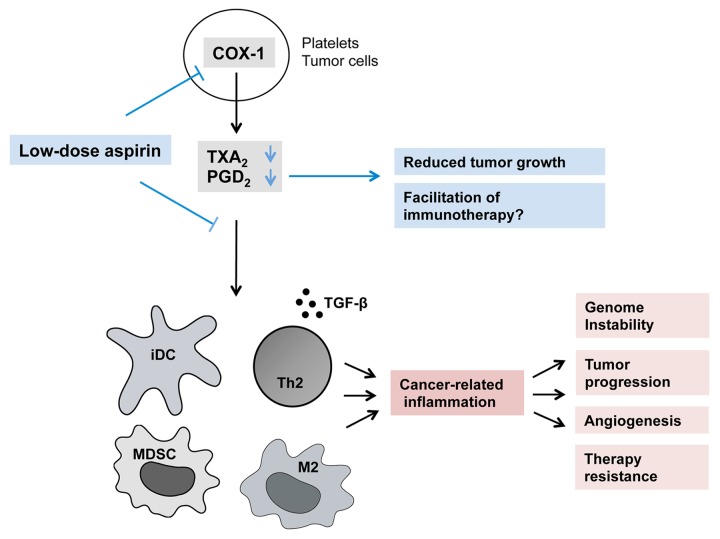Figure 1. Immunological mechanisms underlying the antineoplastic effects of low-dose aspirin. By inactivating cyclooxygenase 1 (COX1) in platelets and/or tumor cells, the conversion of arachidonic acid into thromboxane A2 (TXA2) and prostaglandin D2 (PGD2) is reduced, leading to a decrease in the number of immature immune cells—including immature dendritic cells (iDCs), myeloid-derived suppressor cells (MDSCs) and tumor-associated macrophages (TAMs)—that infiltrate neoplastic lesions, as well as in the expression of immunosuppressive mediators, such as transforming growth factor β (TGFβ). Ultimately, such immunomodulatory effects limit tumor growth, suggesting that low-dose aspirin might be successfully employed in combinatorial regimens to improve the therapeutic efficacy of immunotherapy.

An official website of the United States government
Here's how you know
Official websites use .gov
A
.gov website belongs to an official
government organization in the United States.
Secure .gov websites use HTTPS
A lock (
) or https:// means you've safely
connected to the .gov website. Share sensitive
information only on official, secure websites.
